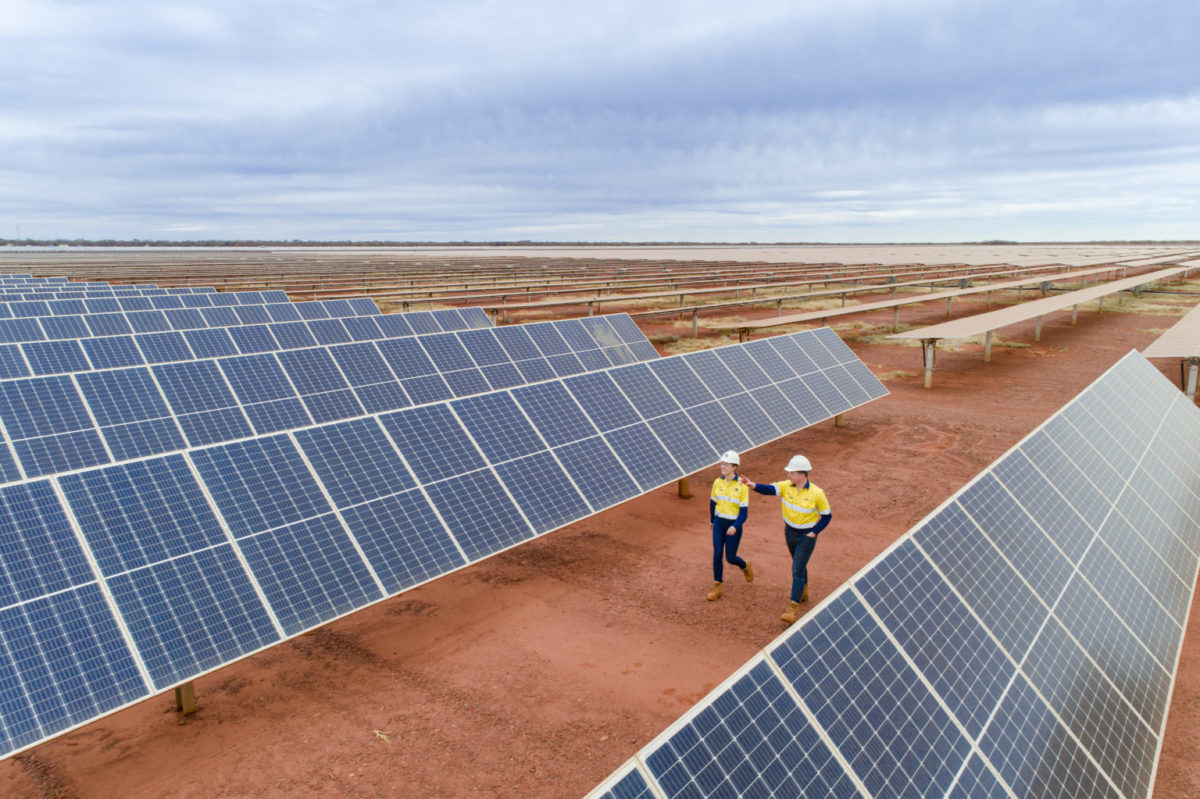Mining giant Fortescue Metals Group’s Chichester Hub iron ore operations are now being powered by solar energy, following the completion of the 60 MW Chichester Hub Solar Farm in the northern part of Western Australia.
The Chichester Hub Solar Farm – which is developed, owned and operated by Alinta Energy – has been operating at full capacity since late November. It has already powered up to 100% of daytime operations at Fortescue’s Christmas Creek and Cloudbreak mining sites.
It is expected that the solar farm, which includes more than 160,000 solar panels spread across 120 hectares, will displace about 100 million litres of diesel per year. The mining operation’s remaining power requirements will be met through Alinta’s existing 145 MW gas-fired Newman power station and 35 MW/11 MWh battery energy storage system.
Alinta Managing Director Jeff Dimery described the solar farm, which is part of the Alinta Fortescue Solar Gas Hybrid installation, as a “benchmark renewable project.” He said the start of operations is a giant leap forward in the race to a low-carbon energy future.
“We took an ambitious brief from Fortescue, who wanted to dramatically slash their emissions, and made it a reality in just three years,” Dimery said. “I can’t understate the engineering challenge of designing and building a renewable solution on this scale, in a harsh environment like the Pilbara, to meet the reliability standards of mines like these.”
The project also included the construction of approximately 60 kilometres of transmission line linking Fortescue’s Christmas Creek and Cloudbreak mining operations to the solar farm and Alinta’s existing Newman power station and battery energy storage system.
Fortescue CEO Elizabeth Gaines said completion of the solar farm marks a major milestone in the delivery of Fortescue’s decarbonisation strategy, as the company works toward its ambitious target of being carbon neutral by 2030 for Scope 1 and 2 emissions.
“The project is a practical example of Fortescue delivering on its ambitious carbon neutrality target and demonstrates that renewables can power the energy needs of Australia’s mining and resources sector,” she said. “As Fortescue transitions from a pure play iron ore producer to a green energy and resources company, this milestone is a critical part of our Pilbara Energy Connect project which together with the Chichester solar farm will see 25% of Fortescue’s stationary energy powered by solar.”
The project forms part of Fortescue’s plan to develop an integrated renewable energy power network in the Pilbara region. ARENA Chief Executive Darren Miller said the commencement of operations at the solar farm is a major boost towards a low carbon energy future.
“This is a monumental step forward to see solar and battery storage help to displace diesel on mining sites,” he said. “Optimising the transition to renewable electricity has been a key priority for ARENA and we are excited to see the Alinta Energy and Fortescue project now successfully using solar energy for the day-to-day operations of the mines.”
This content is protected by copyright and may not be reused. If you want to cooperate with us and would like to reuse some of our content, please contact: editors@pv-magazine.com.




By submitting this form you agree to pv magazine using your data for the purposes of publishing your comment.
Your personal data will only be disclosed or otherwise transmitted to third parties for the purposes of spam filtering or if this is necessary for technical maintenance of the website. Any other transfer to third parties will not take place unless this is justified on the basis of applicable data protection regulations or if pv magazine is legally obliged to do so.
You may revoke this consent at any time with effect for the future, in which case your personal data will be deleted immediately. Otherwise, your data will be deleted if pv magazine has processed your request or the purpose of data storage is fulfilled.
Further information on data privacy can be found in our Data Protection Policy.